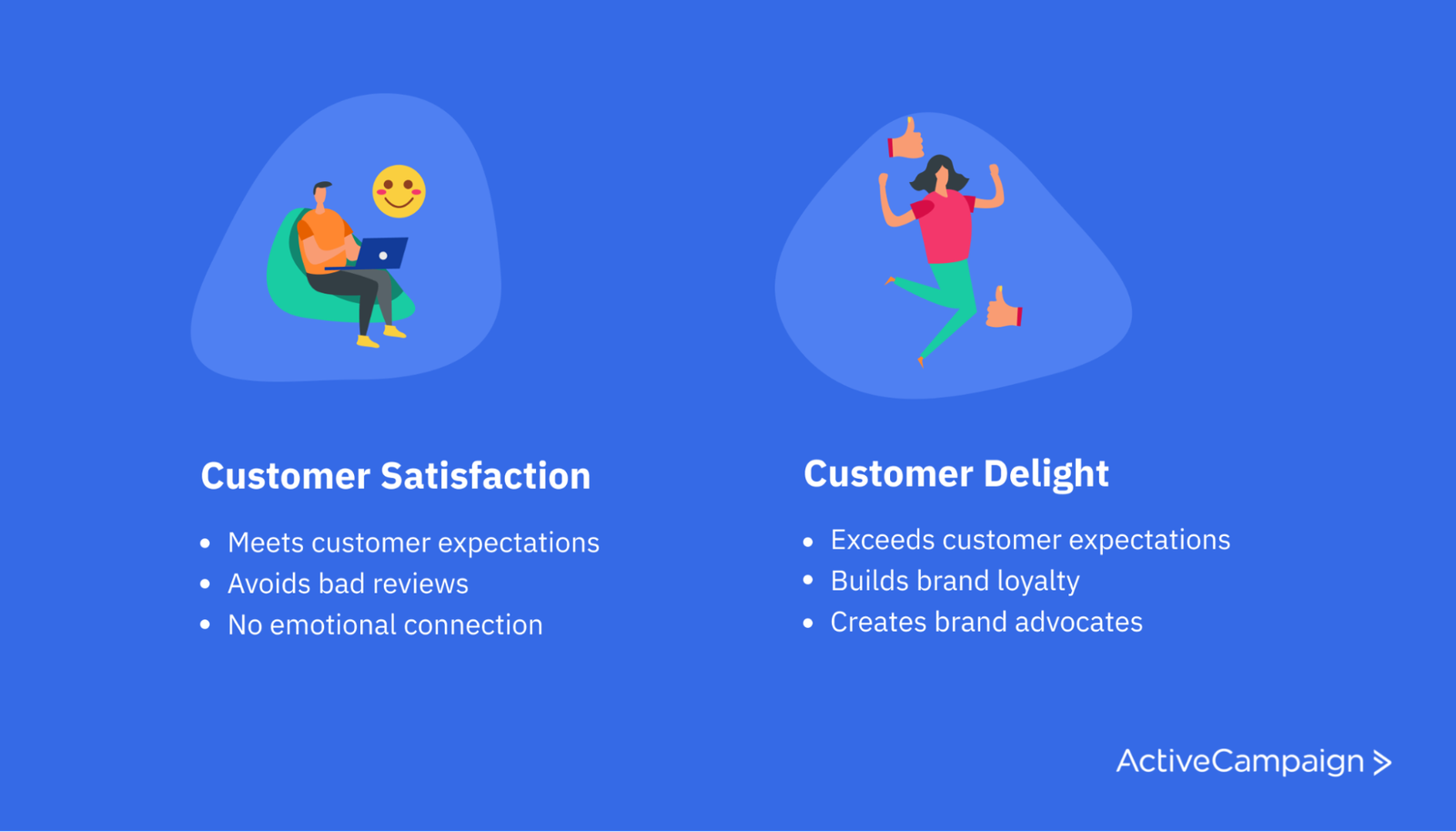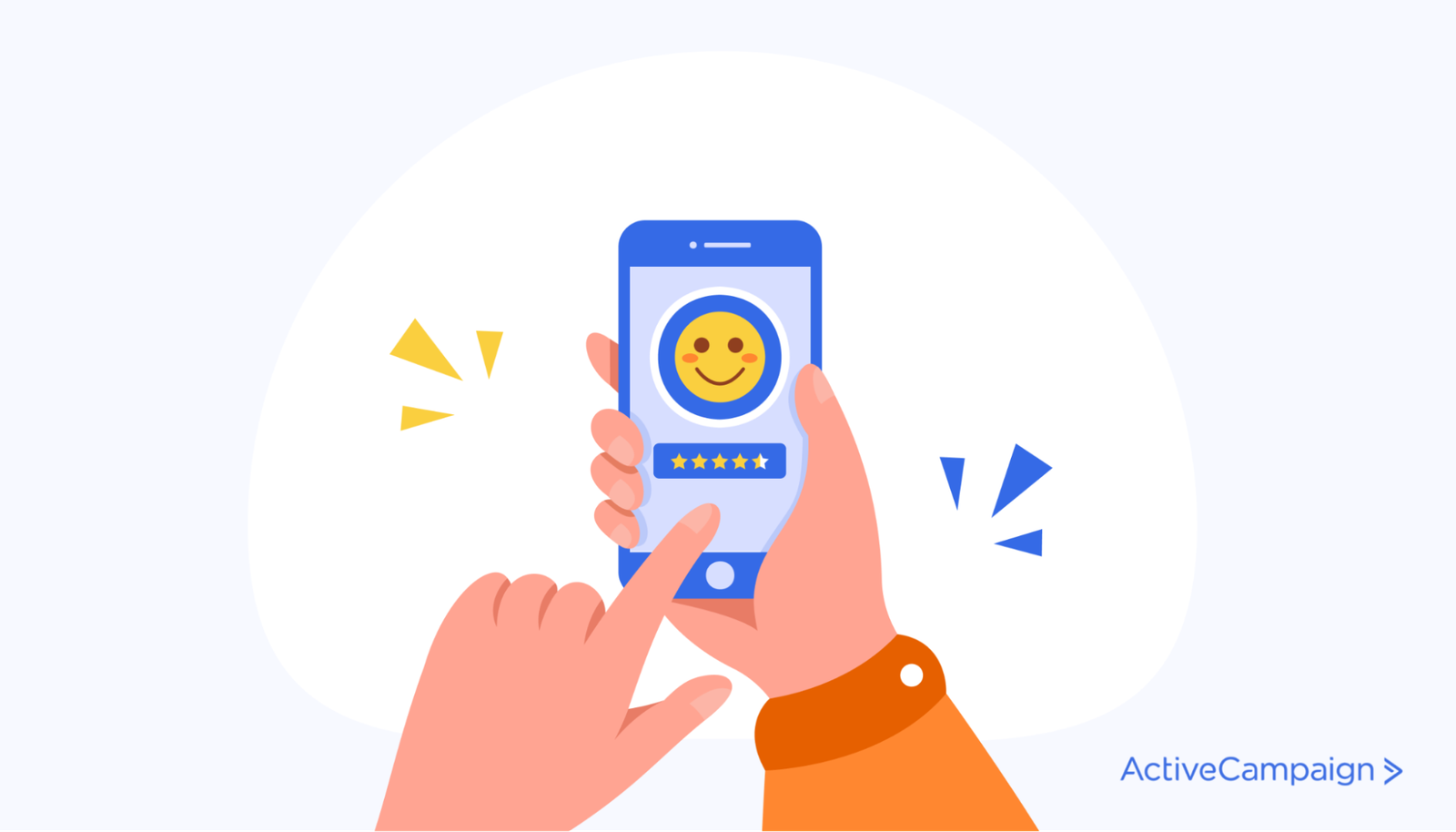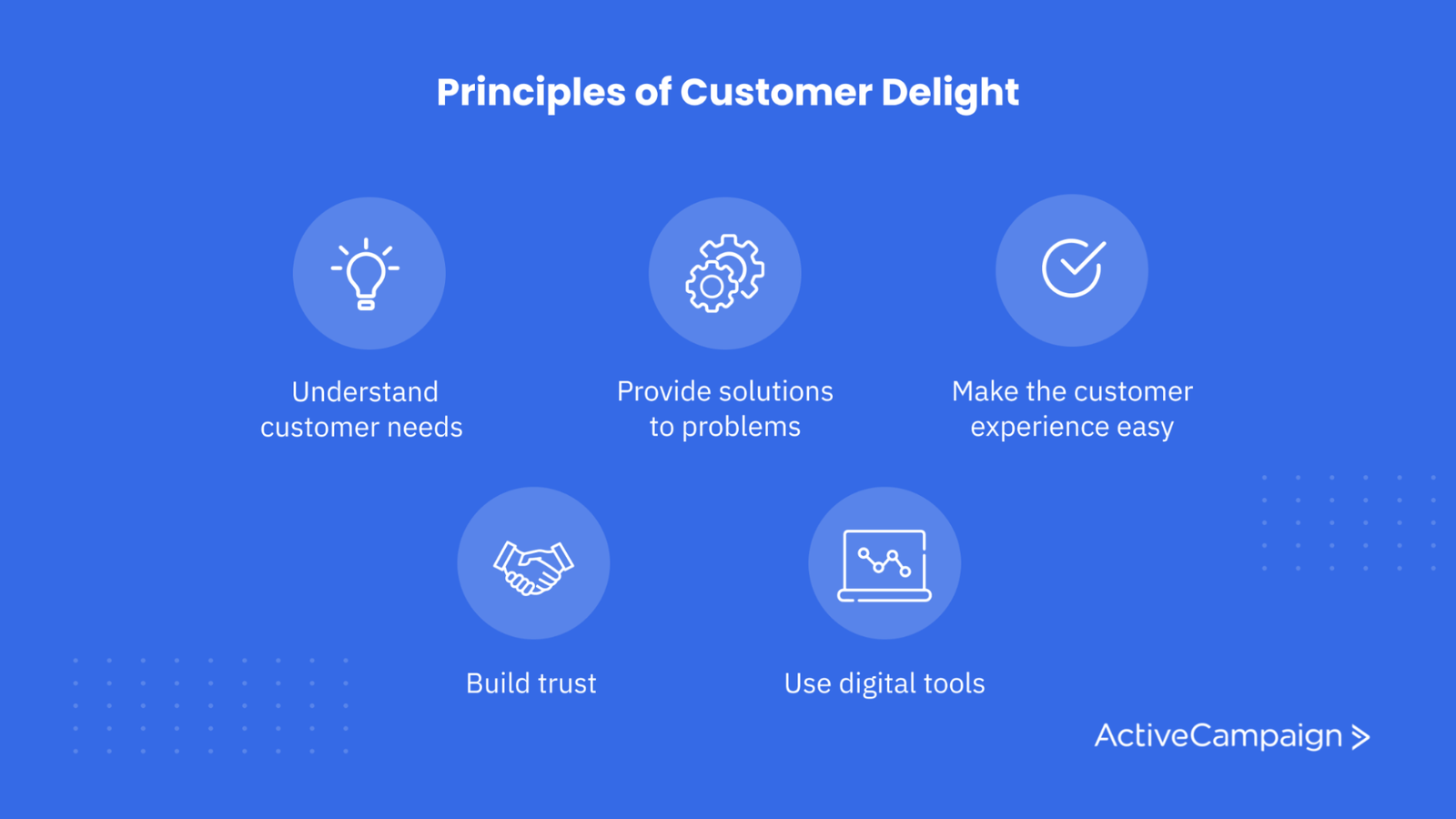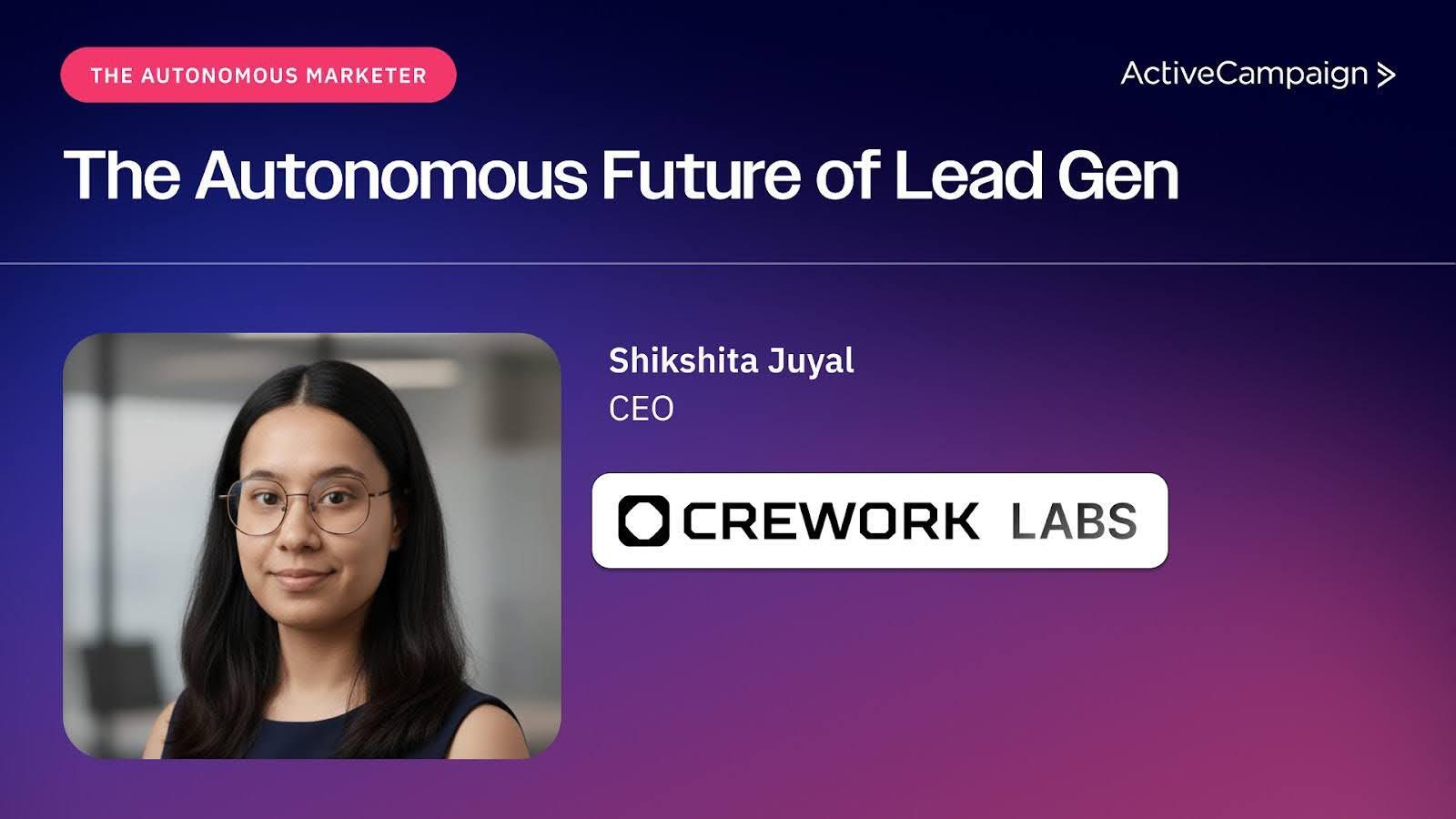It goes without saying that you should try to satisfy your customers.
But today's consumers are informed, and keeping them satisfied won't keep them loyal.
Now read that last line again.
To build a true community of brand advocates and drive long-term growth, you have to do more.
You have to delight them.
Unfortunately, while customer delight is a popular catchphrase, most companies don't achieve it. That's why we're going to give you actionable customer delight strategies to help you stand out from the competition.
This article tells you what customer delight is and how you can deliver it.
What is customer delight?
Customer delight is when you provide a customer experience that exceeds expectations. The customer is pleasantly surprised and associates that positive emotional reaction with your brand.
Customer delight isn’t just providing basic service — it’s going the extra mile.
Why is customer delight important?
Businesses have talked about customer satisfaction for a long time.
But customer delight makes a bigger impression than mere satisfaction. It inspires customer loyalty and an emotional connection to your brand.
That connection is an important part of a customer’s purchase decision — 36.5% of shoppers say they’ll spend more on products if they’re loyal to a brand, even if they can find cheaper options elsewhere.
Customer delight vs customer satisfaction

When you meet a customer’s expectations, you satisfy them.
That’s a good thing.
But because it’s what the customer expected, it’s not likely to cause them to become brand advocates or loyal return customers.
Customers don’t expect a lot from brands. Only 14% of consumers expect to be wowed by a company.
That creates an opportunity for your business to surprise them by going above and beyond. We call that customer delight.
Who’s responsible for customer delight?
Over the course of a customer’s relationship with your company, they’re likely to interact with and be influenced by multiple departments.
Their first impression might be of ads or content created by the marketing team. Then they talk to a sales rep and buy the product. Whether the customer likes the product depends on the product design team. When the customer has an issue with their purchase, they contact customer service.
Each of these touchpoints can make or break the customer experience. Customer delight is a collaborative effort between teams.
Arguments against customer delight
Not everyone thinks customer delight is a goal worth pursuing.
The argument is that simply satisfying customers is enough to build loyalty, and going above and beyond is a waste of resources. These people assume that customers just want convenient service — they don’t need to be wowed.
But everyone agrees that a negative customer experience is damaging to the customer relationship. So, it makes sense to think that a fantastic customer experience could lead to greater loyalty.
Whether you’re trying to amaze customers or simply meet their basic needs, many of the same strategies can be used.
The 5 core principles of customer delight

We’ve looked at what customer delight means. But what exactly is it that delights customers?
To leave your customers with a great impression, follow these principles:
1. Understand your customers’ needs
Know your typical customer. What are their pain points? How can your product or service help them? Once they make a purchase, what assistance might they need with the product?
When you don’t understand customer needs, the customer will have a frustrating experience. For example, you might be trying to convince a prospect that your product is a trendy status symbol when they’re more concerned with affordability.
To delight your customers, you have to understand what will resonate with them.
Learn more about customer needs here.
2. Provide real solutions to customer problems
Both customers and potential customers have problems they need you to solve.
You can create customer delight by anticipating those problems and offering solutions in advance.
3. Make the customer experience as easy as possible
Anytime a customer interacts with your company, it should be a fast and painless process.
Even small inconveniences — like not being able to quickly navigate your website or being transferred between multiple customer support agents — can make a bad impression.
4. Build trust with your customers
Customers can tell if you don’t have their best interests in mind.
If you promise something you can’t deliver, they remember. If you can’t back up your claims with good reviews and testimonials, they notice.
A customer who knows they can always trust your brand to be honest and transparent is a delighted customer.
5. Improve the experience with digital tools
Achieving customer delight is easier than it sounds — you just need the right tools.
Modern software solutions can help marketing, sales, and customer service teams provide an outstanding customer experience.
Create customer delight with these 7 strategies (with examples)
Achieving customer delight requires a plan and the right tools. Let’s look at some actionable strategies for delighting your customers.
1. Collect and analyze customer data
One of the principles of customer delight is understanding your customers’ needs.
But how do you do that? When businesses miss the mark, it’s often because they were just guessing at what customers want.
Get rid of the guesswork by collecting and analyzing customer data. You can use customer data to look at trends. For example, your email marketing campaign statistics can tell you which messaging resonates most with your customers.
You can also collect information about individual customers. Which products have they viewed on your website? Do they have past support tickets? This information will help you anticipate their needs and provide a personalized experience.
An example of using customer data to create customer delight comes from Sneleentaxi, a Dutch taxi service.
Before implementing ActiveCampaign, Sneleentaxi didn’t have any insight into the customer journey.
ActiveCampaign has allowed the company to understand its customers better and anticipate their needs. For example, they can offer discounts to the right customer at the right time.
2. Listen to customer feedback

Want to know whether your customers are delighted with their experience with your company?
Just ask them.
Collecting customer feedback gives you the opportunity to understand customers better and fix anything that’s making them unhappy.
You can gather customer feedback through methods like:
- Forms on your website
- Email surveys
- Social media engagement
If you make a change based on customer feedback, be sure to tell your audience. Consumers are delighted by a brand that knows how to listen and adapt.
3. Improve your response time
Consumers these days are not a patient bunch.
Whether they’re a potential buyer with a question about your services or an existing customer needing support, they don’t want to wait.
There are a few ways you can respond faster:
- Implement chatbots (that can pass the customer on to a human agent if needed)
- Set up autoresponder emails to let customers know when someone will be in touch
- Make sure customer information is easy for salespeople or customer service agents to retrieve
- Get all your teams on the same page, so you don’t waste time sharing information
4. Deliver a personalized experience
A generic message isn’t good enough for your customers — they expect personalization.
72% of consumers say they’re only willing to engage with marketing messages tailored to their interests. 80% of “frequent shoppers” say they’ll only buy from brands that personalize the experience.
And personalization is more than “Hi, [First Name]” at the beginning of an email.
For an example of delighting customers through personalization, we can look at Koia, a maker of healthy plant-based drinks.
Koia wanted to learn more about their customers so they could deliver personalized messages to each of them. They chose ActiveCampaign to help.
Koia now gathers information about customers throughout the customer lifecycle, including their birthdays, hobbies, and shopping habits. They use this data to send personalized emails and promotions.
5. Provide consistent omnichannel communication

Do you know what’s not a delightful experience?
Going to email a company and finding out they only have a phone number available.
Omnichannel communication lets you delight your customers by connecting with them on the channel they prefer. Omnichannel means you use a variety of communication channels, all of which are seamlessly integrated.
6. Don't under-deliver or (over-deliver)
Most customers are disillusioned with brand promises. 56% say a business’s customer service often doesn’t match the image they portray. 80% want brands to be more honest.
Obviously, you shouldn’t promise more than you can deliver.
But be careful — some companies try to play it safe and set the bar too low. For example, they say a product will arrive within two weeks when it will actually only take three days.
Be honest about what you can and can’t offer. Don’t create a negative impression of your company in the name of avoiding over-promising.
7. Implement customer experience automation
To recap: You need to collect and analyze large amounts of data, ask customers for feedback, communicate on multiple channels, respond almost instantly, and personalize your messages.
You’re not going to be able to do that effectively without automation. That’s why automation is one of the four pillars of a customer experience strategy.

The others are:
- Orchestration: Bringing together data from multiple platforms to create a more connected customer experience strategy.
- Segmentation: Using the information you have on your customers to customize their experience.
- Personalization: Creating a unique experience for each customer.
The right customer experience platform can be the foundation for all four pillars. For example, let’s look at Iconosquare.
Iconosquare was working with an in-house solution that required automations to be triggered manually. They were sending email campaigns, but sequences of emails could only be linear and couldn’t be paused if a customer’s needs changed.
Iconosquare switched to ActiveCampaign, allowing them to send email campaigns with dynamic paths that automatically change mid-course depending on customer data. Thanks to this and other features, Iconosquare achieved 30% more efficient customer communications.
How to measure customer delight
There’s no rule for how to measure customer delight.
Many businesses create an internal customer delight index (CDI) based on the factors they think are important. Usually, this involves surveying customers.
Here are some more metrics you could use to measure customer delight.
CSAT
CSAT stands for customer satisfaction. Your CSAT score is the percentage of total customers who have a positive experience with your company.
You can determine this by sending surveys to your customers, asking them to rank their satisfaction with your business, products, or customer service.
Net Promoter Score (NPS)
Your net promoter score is also determined by sending surveys, but NPS traditionally relies on asking a single question:
On a scale of 0 to 10, how likely are you to recommend our business to a friend or colleague?
To calculate your NPS score, you subtract the percentage of customers who are detractors (the ones who answered with 0 - 6) from the percentage of promoters (answered 9-10).
Customer lifetime value (CLTV)
Customer lifetime value is the profit that the average customer delivers to your business in their lifetime.
A lot of factors affect CLTV, so it shouldn’t be your only measure of customer happiness. However, it can help you understand the bigger picture of how customers feel about your business.
Customer churn
Customer churn, also called customer attrition or turnover, is the loss of clients or customers.
A high or rising customer churn rate is a hint that your customers aren’t delighted.
Customer delight is more than just a positive experience
To delight your customers, you have to create a surprisingly positive customer experience. That’s a complex task involving multiple departments, lots of data, and customers at every stage of their journey.
Luckily, you don’t have to do it all manually. The right automation platform will help you exceed customer expectations at every turn.
Ready to delight your customers? Try ActiveCampaign Customer Experience Automation.








